No products in the cart.
Hair Care Guide
How To Reverse Balayage Light To Dark?
If you are curious about what reverse balayage light to dark is and how to achieve it, keep reading to know about this trendy technique before giving it a try!
Reverse balayage is popular for both celebrities and general public, with the offering for dimension and the sun-kissed glow to hair. However, when the new season comes, many of us want to crave a new hair look while staying within our comfort zone. If this sounds like you, then reverse balayage is the perfect choice.
If you are curious about what reverse balayage light to dark is and how to achieve it, keep reading and Jen Hair will provide you with everything you need to know about this trendy technique before giving it a try!
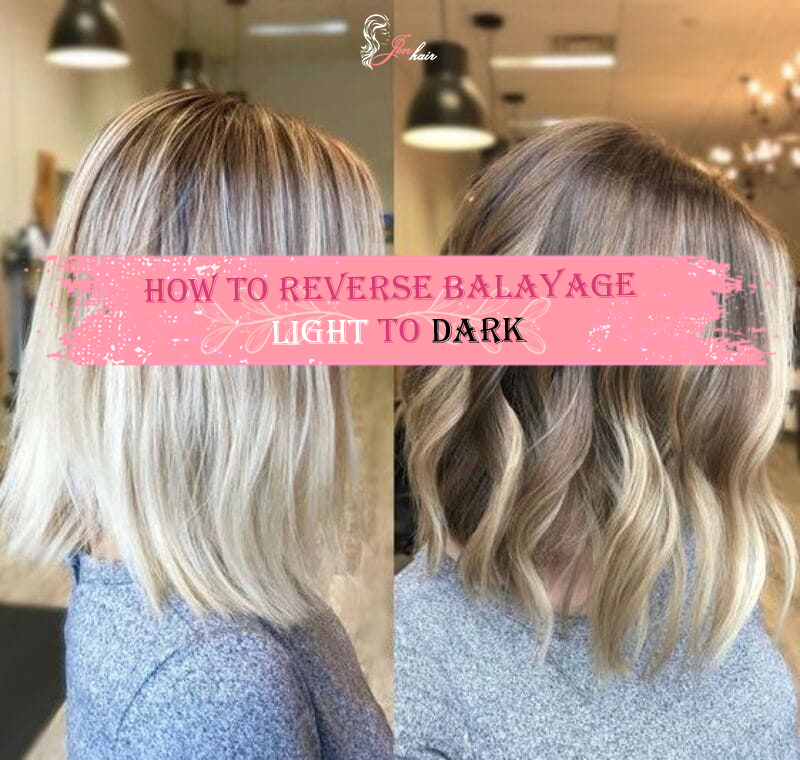
What Is Reverse Balayage?
Reverse balayage is a technique that adds depth to your hair by incorporating darker color tones. Its purpose is to make your highlights stand out by creating contrast. Therefore, it is especially beneficial for blondes looking for a subtle darkening effect.
Instead of highlighted brown hair, reverse balayage creates a lived-in and sun-kissed look with rich depth and dimension. This is accomplished by blending lighter roots with darker strands.
Blondes often prefer reverse balayage because it beautifully complements their highlights. The process involves incorporating darker lowlights and tones throughout the hair, injecting a touch of darkness into the overall hairstyle.
The best part is that it is a low-commitment choice, allowing you to try it out for a season or two, like taking it for a test. If you decide it is not for you, growing it out is straightaway.
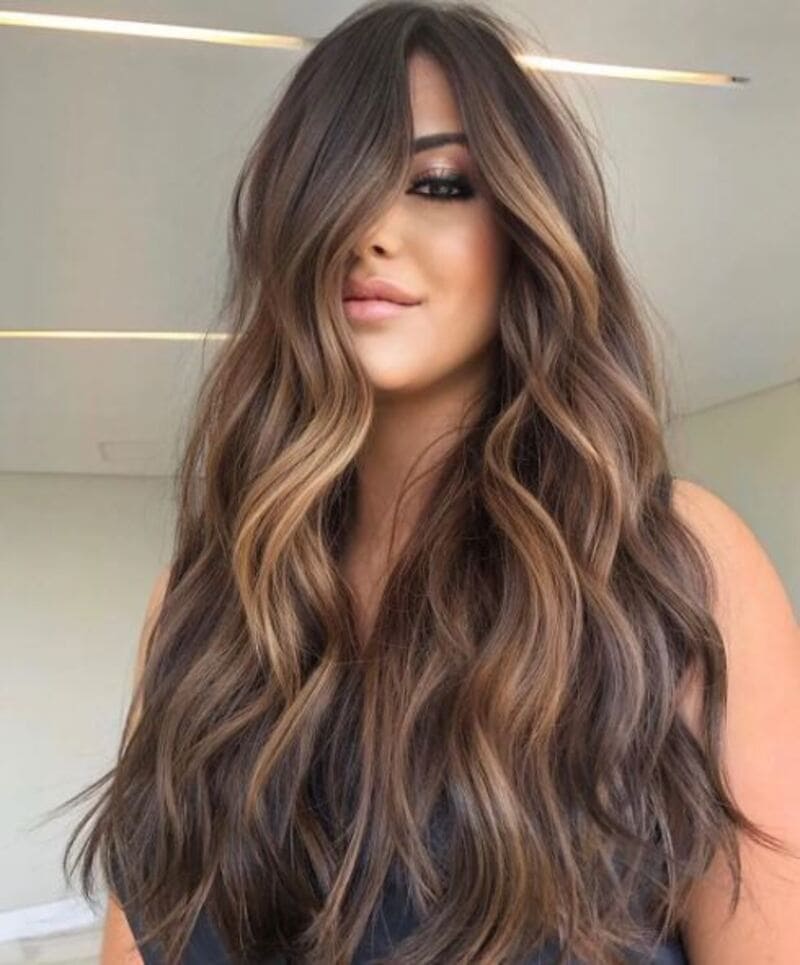
Benefits of Reverse Balayage
Reverse balayage offers numerous benefits. As mentioned before, it requires minimal commitment and upkeep since the technique preserves your natural regrowth. It is a low-maintenance option that effortlessly blends your natural hair with the new color.
The key advantage lies in a seamless blend between your natural hair color and the roots. This smooth transition ensures the grow-out process is hassle-free. Therefore, if you suddenly decide to move on from reverse balayage, growing it out is incredibly simple.
To maintain the vibrancy of the hair color and keep your hair healthy, you just need to use color-safe shampoos and nourishing hair masks.
Similar to traditional balayage, reverse balayage works well with all hair types, textures, and skin tones. It is a versatile technique that can be customized to suit individual preferences and features.

Downsides of Reverse Balayage
Reverse balayage doesn’t have many downsides at all. However, it is vital to consider a few things before getting the technique done. Firstly, be prepared to embrace a darker hair color as reverse balayage will give you a darker effect. Make sure you are absolutely certain about wanting a darker look before committing to it.
Additionally, different styles of reverse balayage require varying levels of maintenance. For example, if you choose a “reverse ombré” look with lighter roots, expect it will need more upkeep and regular touch-ups to maintain the appearance.
Reverse Balayage vs. Balayage
The balayage color technique aims to create a lighter appearance. The term “balayage” originates from French and refers to a freehand painting technique primarily focused on the top layer of the hair. It involves using highlights and color to lighten this layer. For instance, a popular balayage style often features an ombré effect with painted-on highlights, softly blended dark roots, and a gradient of blonde shades.
On the other hand, reverse balayage takes the opposite approach. Instead of emphasizing the highlights and top layers, it concentrates on the beneath part, which are the lowlights and under-layers. The goal is to achieve a natural look by blending these darker, shadowy pieces with the rest of your hair. The reverse balayage light to dark technique incorporates lowlights and tones to create contrast, particularly with the darker sections situated underneath.
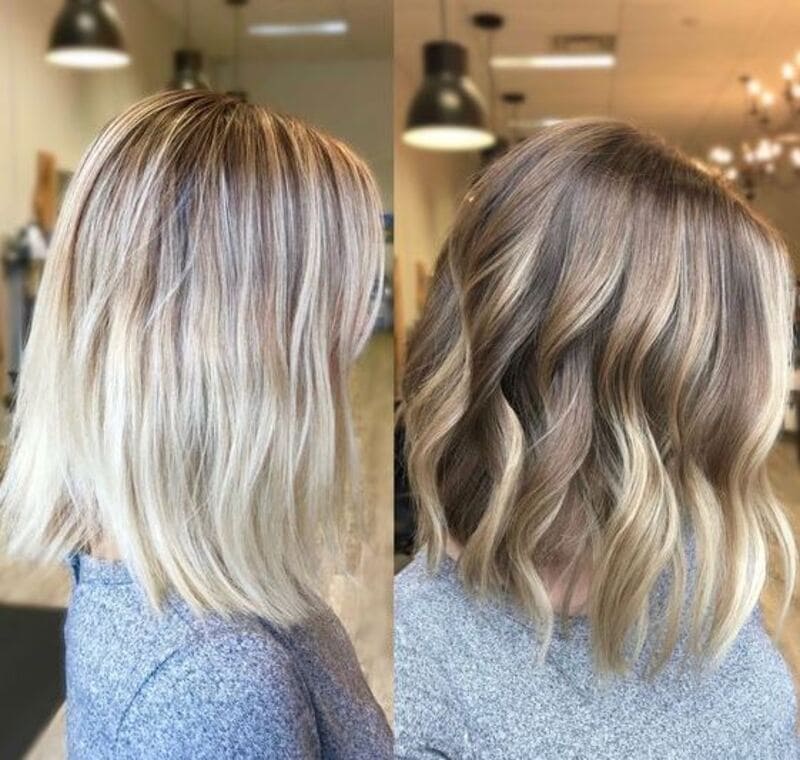
How To Go From Light To Dark Balayage
Achieving a light-to-dark balayage is an exciting way to transition your hair color. Here’s a step-by-step guide on how to go from light to dark balayage:
- Determine your desired dark shade: Consider the shade you want to achieve for your dark balayage, such as a rich chocolate brown, deep mahogany, or any other dark hue. A clear vision will help guide the process.
- Consult a professional stylist: It is recommended to seek a professional colorist for the best results. They can assess your hair’s condition, texture, and current color to determine the ideal approach for the light-to-dark balayage.
- Preparing your hair: If your hair is already light, you can skip this step. However, if you have darker hair or previous color treatments, your colorist needs to lighten certain sections to create a base for the dark balayage. It is a lightening process such as bleaching or using a color remover.
- Balayage application: The stylist will apply the dark color to your hair using the balayage technique. Balayage involves freehand painting of color onto specific sections, focusing on creating a natural effect. They will place the darker hues to achieve the desired reverse balayage light to dark transition.
- Processing time: The color will need time to develop and penetrate the hair shaft. The length of processing time will depend on your hair’s starting color, desired shade, and the specific product used. Your colorist will monitor the process to ensure the desired outcome.
- Rinse and tone: Once the processing time is complete, it is time to rinse out the color and apply toner if needed. Toning helps to refine and balance the color for a seamless blend between the light and dark sections.
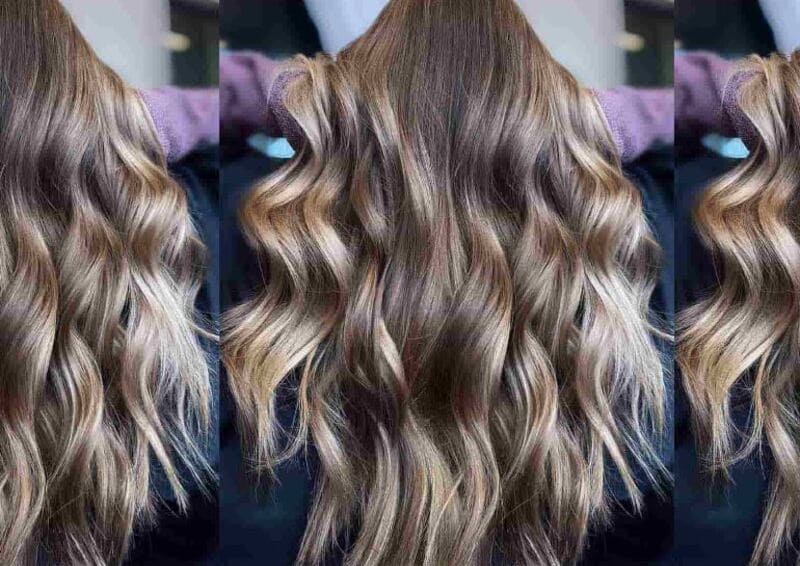
Reverse Balayage Light To Dark Before And After
Are you curious about the transformative power of reverse balayage from light to dark hair? Witness the stunning before and after results that this technique can achieve.
The initial look can showcase light-colored hair, such as blonde, caramel, or another radiant shade. While beautiful in its own right, you may be seeking a change for a darker hair color that adds depth and richness to your locks.
Then, you can be amazed by the captivating after-effects of reverse balayage. When the light-to-dark transition is achieved, seamlessly blend darker shades into your hair. The result is a multidimensional masterpiece with a touch of elegance and intrigue to your overall appearance. The magic of reverse balayage will take your hair on a transformative journey from light to dark!
Top Reverse Balayage Hair Styles
Short Hair Reverse Balayage
Highlighting techniques can be more challenging when you have short hair than thick, long locks. However, reverse balayage is a solution for this concern by providing the same stunning multidimensional results, even on shorter hair.
Hair stylists often recommend reverse balayage for shorter hairstyles because it requires less maintenance. This means you can enjoy the beautiful effects of reverse balayage while still keeping up with the demands of shorter haircuts.
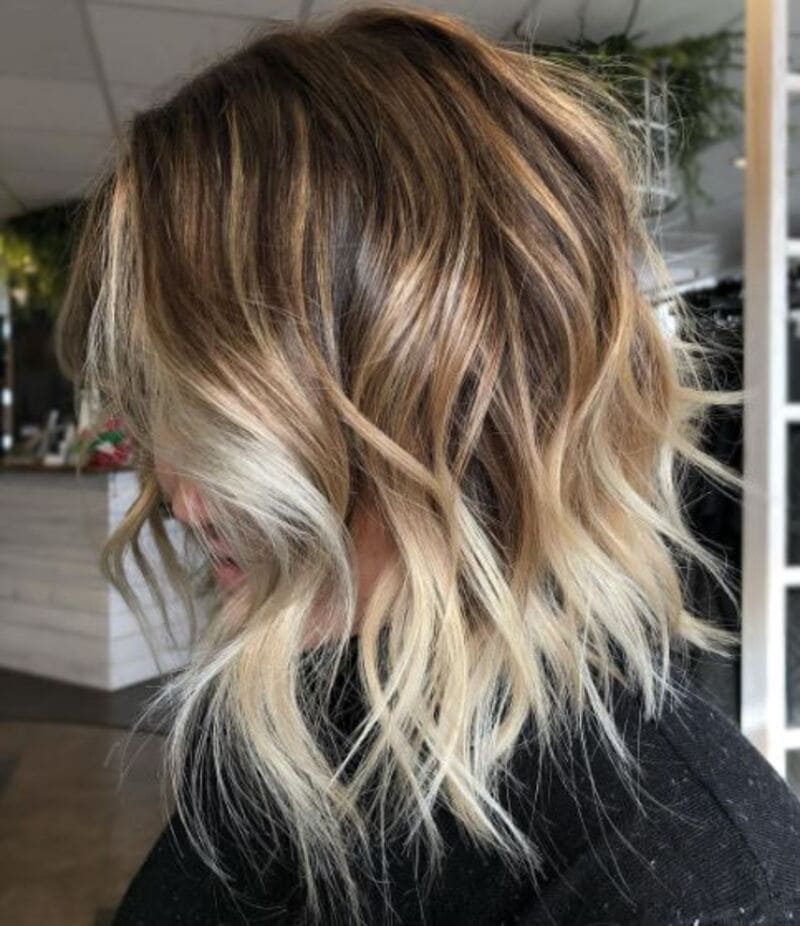
Reverse Balayage Blonde to Brown
If you are ready to make the transition from a blondie to a brunette, reverse balayage from blonde to brown is an ideal step in the progression. This technique allows for a seamless shift from blonde to brown with a smooth and beautiful transformation.
For those who adore the captivating charm of silvery grey tones, reverse balayage offers a stunning option. Specifically, this technique gracefully transitions ash blonde hair into an exquisite ash brown balayage.
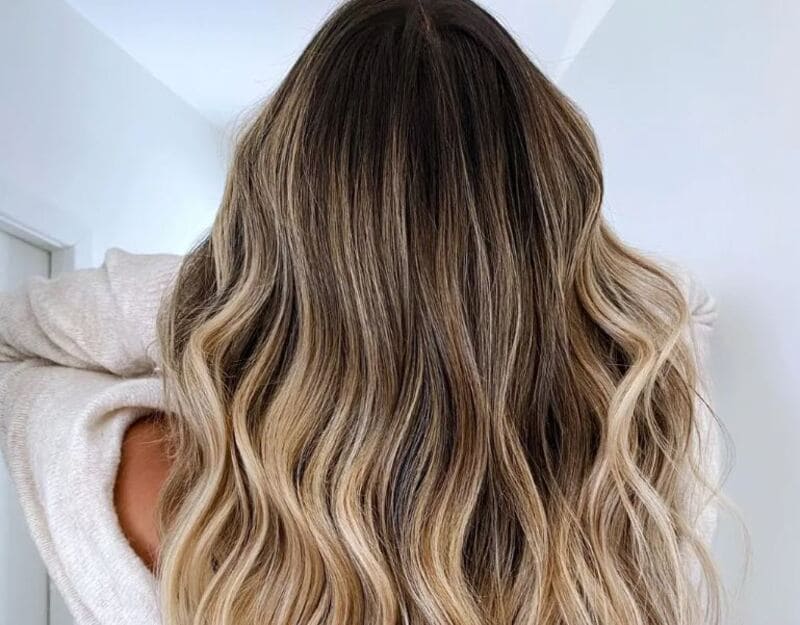
Reverse Balayage Blonde
If you have been rocking blonde hair for a while and are ready for a change, reverse balayage blonde is a great option to transition into a golden brunette look.
Blonde hair often requires a lot of upkeep, so reverse balayage is a perfect technique to help you take a break while maintaining a stylish appearance. This technique gently transitions your natural roots into a custom-blended balayage effect, so you can enjoy a more low-maintenance and beautiful look.
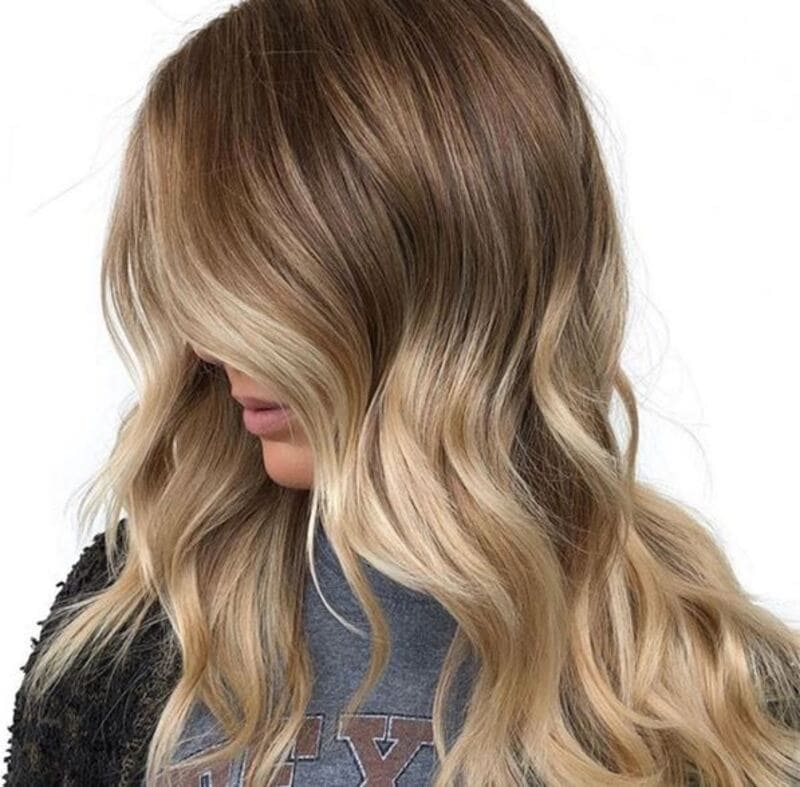
Reverse Balayage Brunette
You can elevate your stunning brunette hair to new heights with reverse balayage. This technique adds a captivating multidimensional effect to caramel and chocolate shades.
By skillfully blending darker browns closer to the roots using hand-painted brush strokes, you can achieve a natural-looking, multicolored bronze color. That’s why it is a fabulous way to enhance your brunette locks with depth and richness.
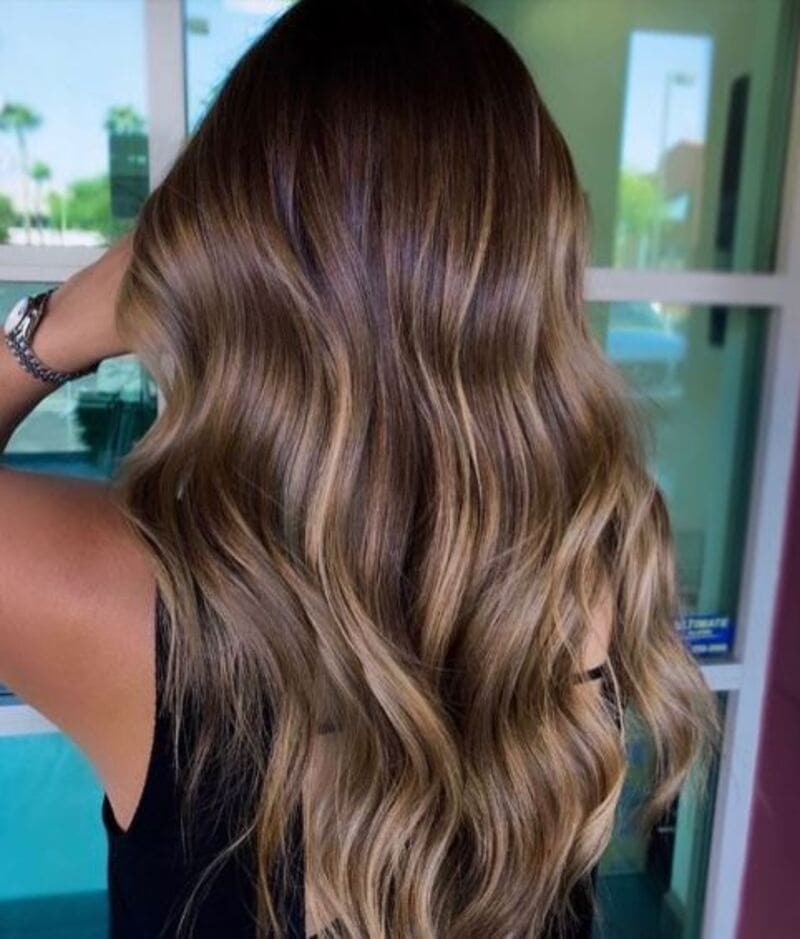
Brown Reverse Balayage
If you have a copper brown or cinnamon hair color and want to create more dimension, brown reverse balayage offers a fantastic solution. With this style, you can keep your natural brunette color while adding tasteful lowlights for added depth.
The roots of this stunning balayage feature a unique twist, as rich mocha and chocolate hues are seamlessly blended, creating a beautiful coppery cinnamon effect. And the result is a beautiful and striking look that is sure to turn heads.

Dark Reverse Balayage
When working with already black hair, it is a bit tricky to achieve the desired result with reverse balayage light to dark. The challenge lies in avoiding excessive darkness while still achieving the dimension.
To create the perfect dark reverse balayage, your colorist typically employs a combination of highlights, lowlights, and root shadowing techniques. These methods work together to strike the right balance, ensuring that the end result is a beautifully textured and dimensional look.
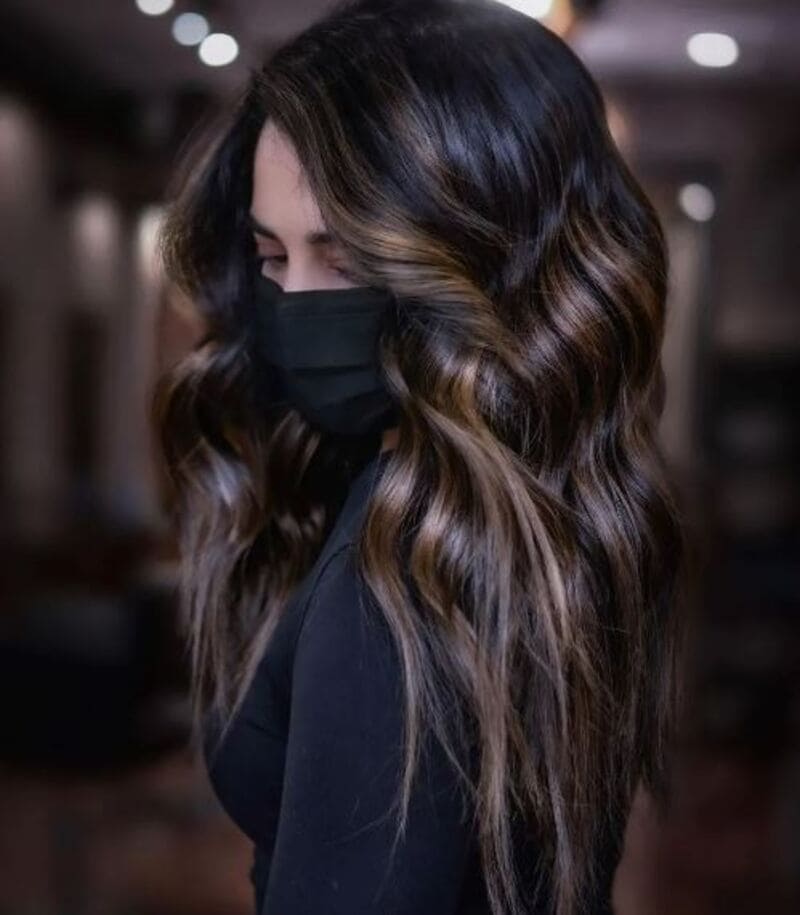
Balayage Reverse Ombre
You can totally achieve a balayage reverse ombre look. This means that if you prefer the style of lighter roots that gradually transition into darker ends but still want to enjoy the multidimensional effect of balayage, your stylist can apply a reverse ombre technique. They will then incorporate lowlights into your roots for a beautiful balayage effect.
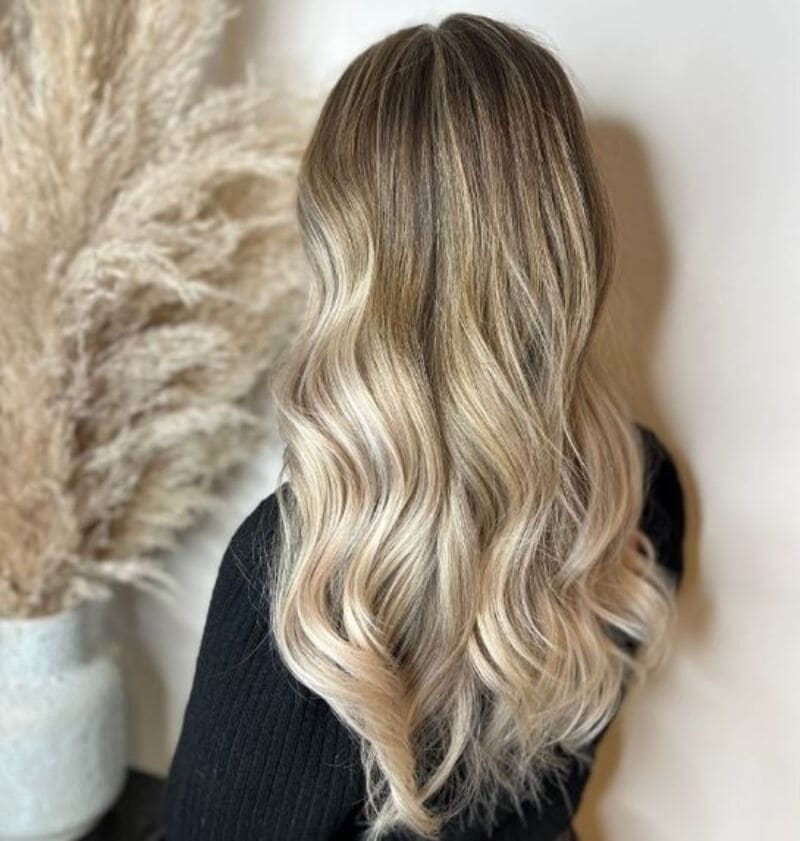
Reverse Balayage on Bleached Hair
When you go from bleached blonde hair to a darker color, the change is quite dramatic. However, with reverse balayage on bleached hair, you can achieve a gradual transition to a darker blonde shade.
This technique focuses on adding blended lowlights to the roots, allowing for a smoother and more natural-looking change. Additionally, it creates a cool contrast between the ash blonde and brown tones for a pretty awesome overall look.
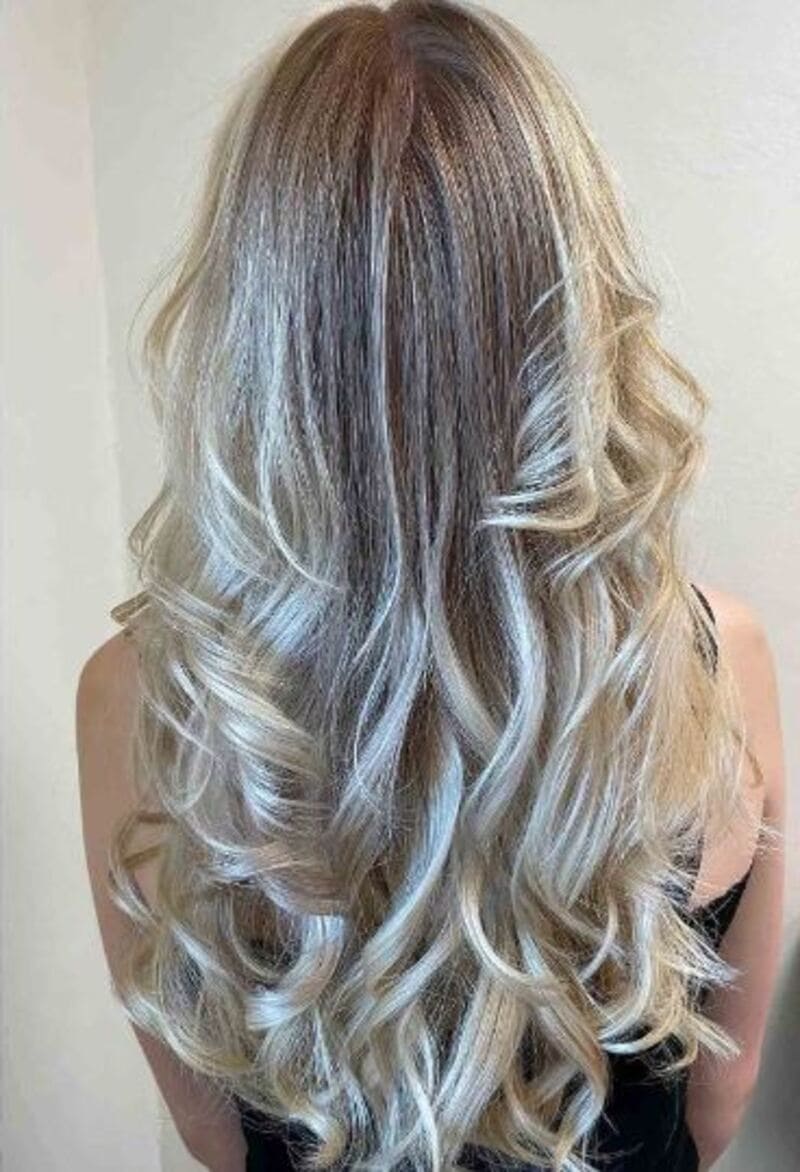
Platinum Blonde Reverse Balayage
One of the top reasons people choose reverse balayage is when they want to transition from blonde to brown hair. It is known as platinum blonde reverse balayage that offers a smooth progression from ultra-light hair to a stunning multidimensional sandy hair color. It creates a seamless natural blend, making it a popular choice for those seeking a beautiful transition from their previous blonde look to a rich brown shade.

How Do You Care For Reverse Balayage?
It is crucial to reconsider if you want to stick to the same hair care routine after getting balayage. Unlike your previous balayage, which likely involved the use of bleach to lighten your strands, your newly darkened hair has different requirements. Fortunately, maintaining dark shades usually requires less maintenance than blonde hues.
To begin, replace your regular shampoo and conditioner with the one specifically designed to care for your new color. We recommend the Redken Color Extend Magnetics Shampoo + Conditioner Duo, formulated with Redken’s exclusive RCT Protein Complex. This item strengthens your hair without stripping moisture or color.
If your darkened hair starts to develop red undertones, we suggest trying the Matrix Total Results Dark Envy Shampoo and Conditioner. This color-depositing product works effectively to eliminate red undertones from dark hair colors.
An undesired undertone that can appear in darkened hair is orange. However, it can be remedied with a blue shampoo and conditioner. The Redken Color Extend Brownlights Shampoo + Conditioner Duo is ideal for toning brown hair with highlights or balayage over multiple applications.
Even if your colorist did not use bleach for your new hue, color treatments can still cause dryness. Therefore, give your strands some extra care by incorporating a weekly hair mask into your routine. The L’Oréal Professionnel Serie Expert Vitamino Color Mask is a good option for color-treated hair. It contains resveratrol, which protects your strands against breakage while preserving shine.

Cost Of Reverse Balayage
The cost of reverse balayage varies based on the salon you choose, the expertise of your colorist, and the number of lowlights. Generally, you can anticipate a price range of approximately $150 to $500 for reverse balayage, which is comparable to the cost of a full set of highlights.
FAQs
Can a reverse balayage be done on naturally dark hair?
Yes, a reverse balayage light to dark can be done on naturally dark hair. In fact, it is a great option to add depth and dimension to dark hair by incorporating darker lowlights while still keeping a seamless blend with the natural color.
Is it feasible to alter the tone of my balayage?
Yes, it is possible to alter the tone of your balayage, as balayage allows for flexibility in adjusting the tone or color of the highlights. By working with your colorist, you can achieve different tones, such as warmer or cooler shades, to customize your balayage look.
Does ombre typically transition from a lighter to a darker shade?
Traditionally, ombre involves a transition from a darker shade at the roots to a lighter shade towards the ends. However, ombre can be customized based on personal preference. It is possible to have a reverse ombre, where the transition goes from a lighter shade at the roots to a darker shade towards the ends.
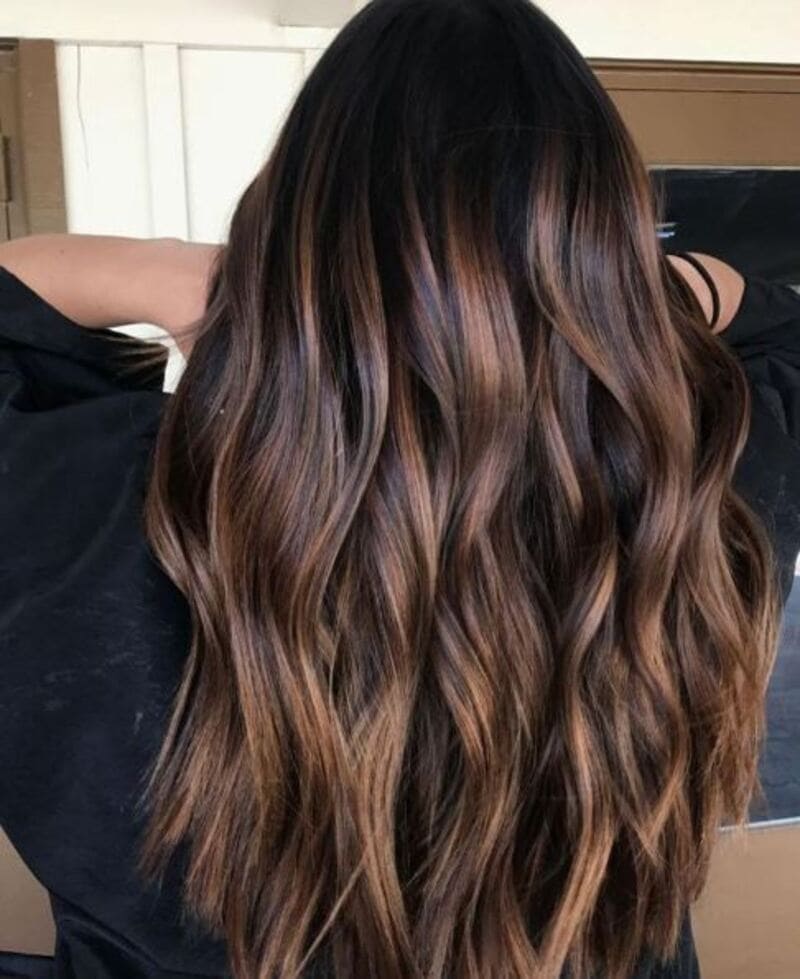
In Conclusion
Reverse balayage light to dark offers a stunning way to transform your hair color and enhance your overall style. Whether you are looking to add dimension, depth, or simply embrace a new look, reverse balayage can be customized to suit various hairstyles.
To further explore the possibilities and find the perfect products for your hair journey, consider reaching out to Jen Hair, a Vietnamese hair extension wholesaler. Our expertise in hair extensions can complement the reverse balayage technique for you to achieve the desired length and volume for your dream hairstyle. Contact Jen Hair today to discover the endless possibilities of reverse balayage and quality hair extensions
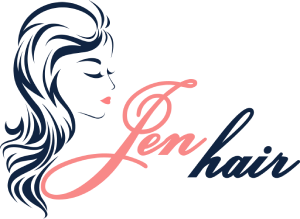
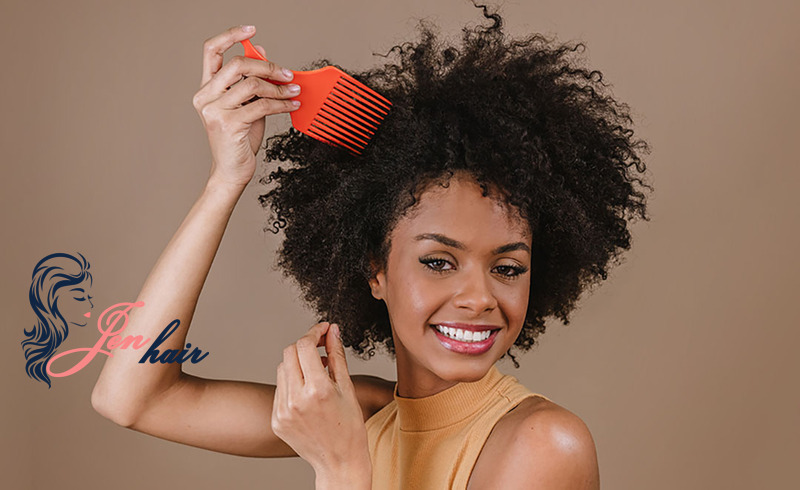 Guide Cornrows With Side Part The Best For Beginner
Guide Cornrows With Side Part The Best For Beginner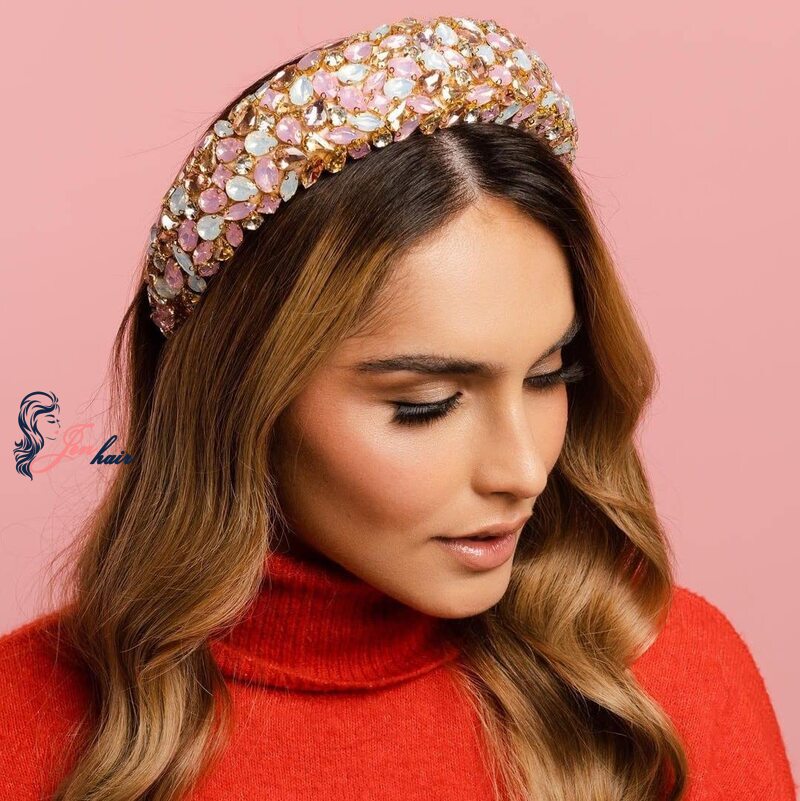 Ultimate Guide: Headband with Hair Attached (Best Styles for 2025)
Ultimate Guide: Headband with Hair Attached (Best Styles for 2025)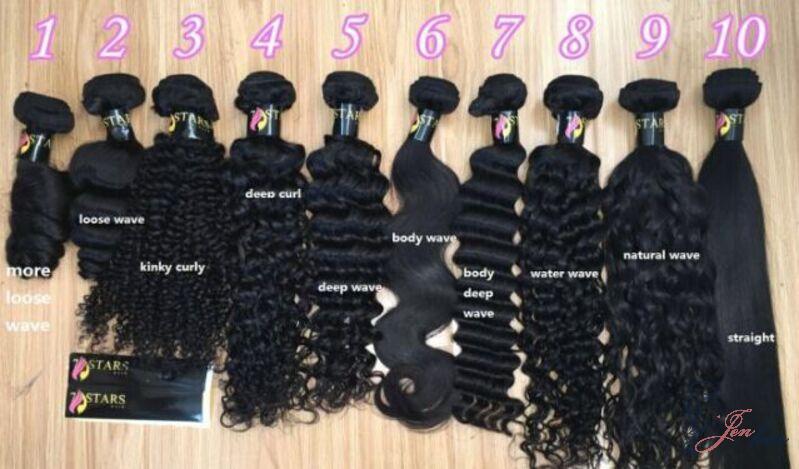 Human Hair Clip In Extensions For Black Hair For Thin Hair
Human Hair Clip In Extensions For Black Hair For Thin Hair
